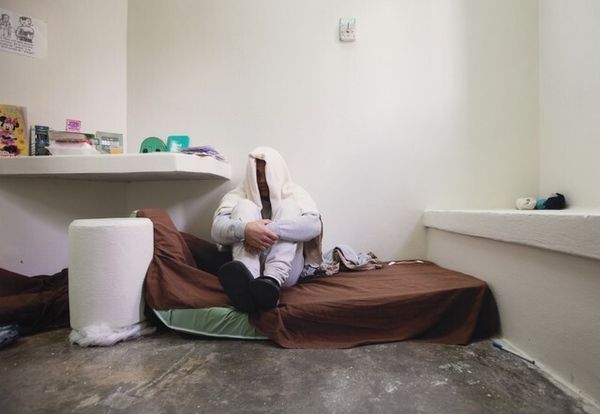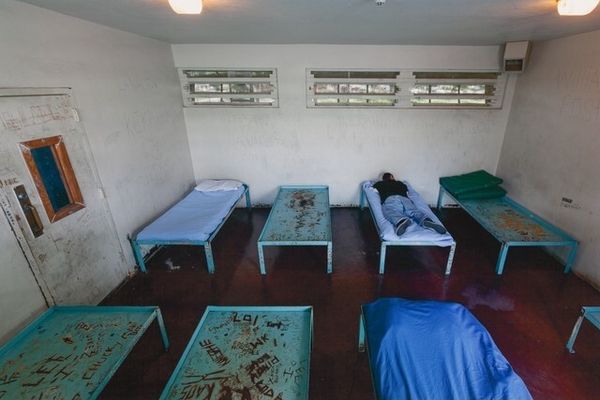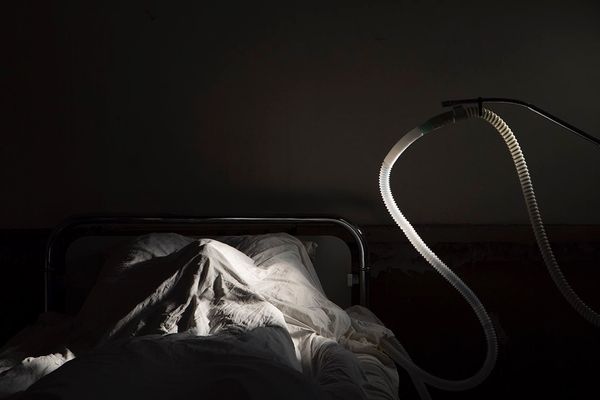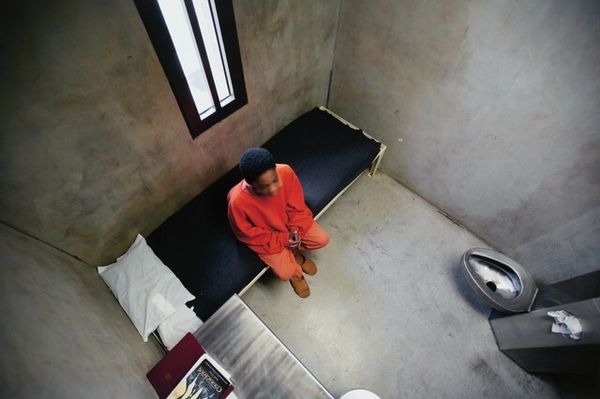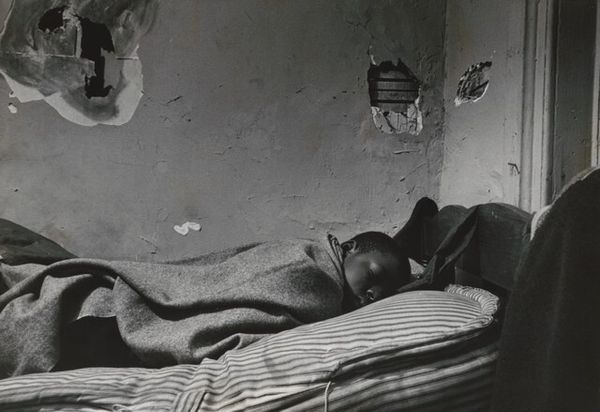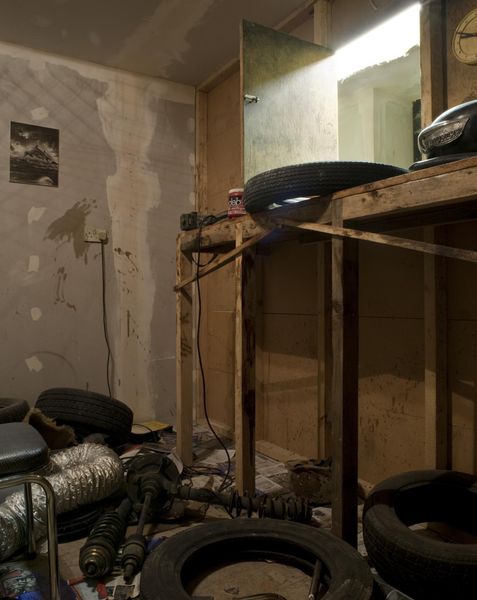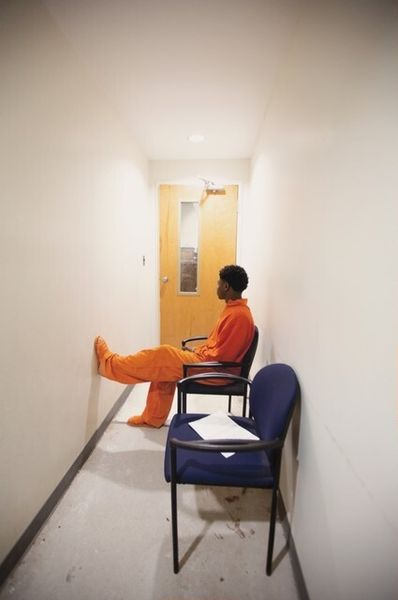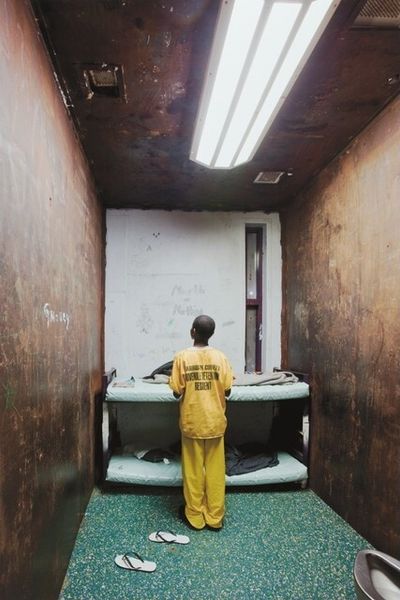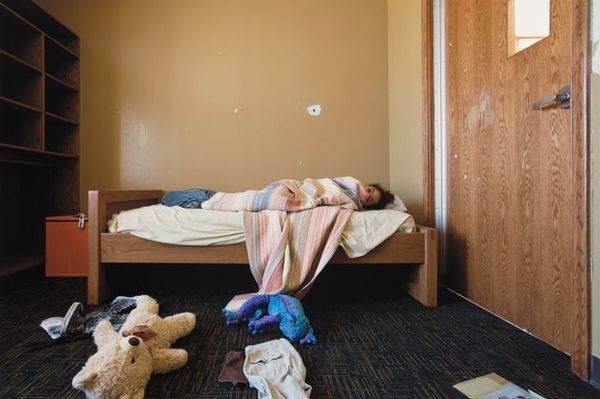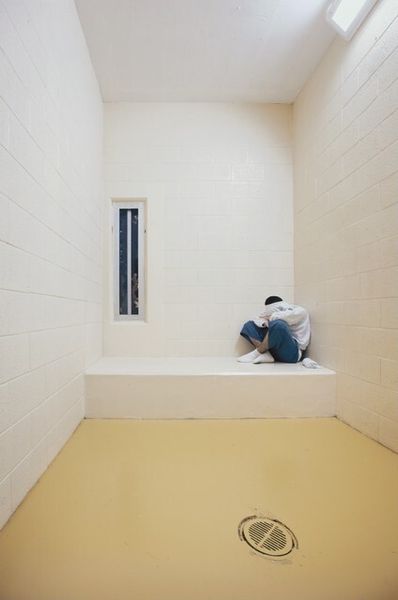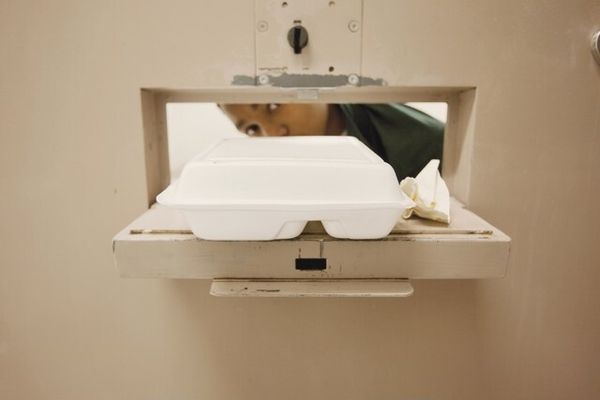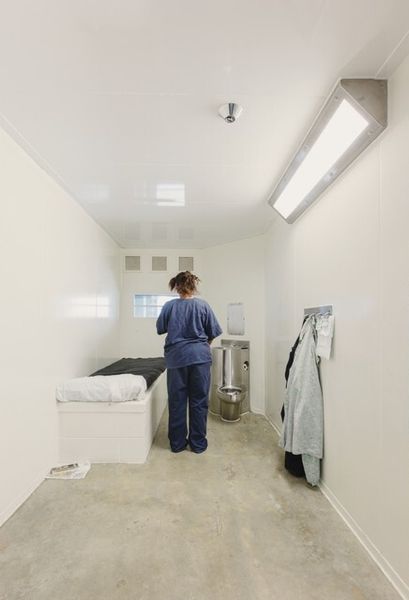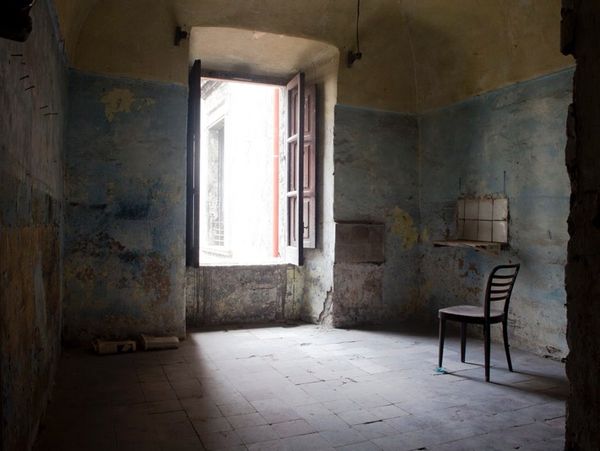
#
acrylic
#
pasteup
#
muted colour palette
#
building site documentary shot
#
painted
#
derelict
#
underpainting
#
painting painterly
#
limited palette
#
watercolor
Dimensions: image: 37.1 × 55.9 cm (14 5/8 × 22 in.) sheet: 43.2 × 61 cm (17 × 24 in.)
Copyright: National Gallery of Art: CC0 1.0
Curator: Richard Ross's "California," created in 2015, immediately draws the eye. The piece makes use of acrylic and paste-up. It gives you pause, doesn't it? Editor: Yes, an unsettling stillness. The limited palette heightens that sense of unease; almost monochromatic save for the raw wall, and a human being hiding. It reads as confinement, literally and psychologically. Curator: Absolutely. Ross's work frequently tackles social issues, especially those connected to incarceration. Note how the image plays with themes of vulnerability and visibility. Who sees the unseen? Editor: The image relies so heavily on the visual language of institutions—that particular shade of institutional green-grey for the floor. Then you notice that it’s not some still life—it’s a body, sheltering or hiding. Almost foetal. Curator: It reflects the dehumanizing impact of the carceral system, drawing on theories of social control, of racial injustice, and the ways in which those systems quite literally bury individuals, as seen here. Editor: It’s also very visually impactful that you only see the person peripherally, obscured under the bed. And how that bed—clearly made for sleeping— becomes a kind of refuge in broad daylight. Do we dare imagine what’s made him take to this hidden place? Curator: It's a powerful visual metaphor. The bed, an icon of rest and safety, is transformed into an inadequate shelter. The peeling paint speaks to larger neglect that shapes these harsh environments and perhaps also of individual human suffering that is taking place. Editor: The way the light slices across the floor is striking— those barred window shadows are a constant, looming presence that speaks to surveillance and the crushing lack of privacy in those spaces. Is there even an opportunity to truly rest within these shadows? Curator: Exactly. It urges us to reconsider our own relationships to these very visible absences in society. Are we also bystanders who allow this form of "burial" to take place? Editor: It definitely forces one to contemplate themes of hope and abandonment. Curator: It does; hopefully sparking a crucial dialogue. Editor: Precisely, bringing to light difficult and frequently overlooked human realities.
Comments
No comments
Be the first to comment and join the conversation on the ultimate creative platform.
